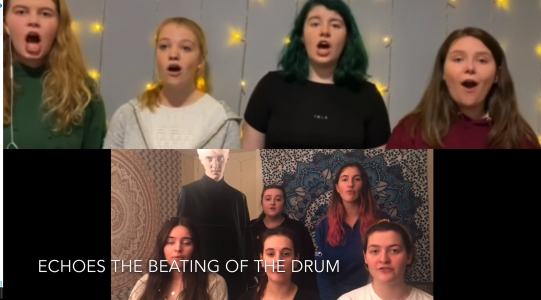November 20, 2020, by Matt Davies
DTH Spotlight: Musicality by Harriot Smith
This week DTH volunteer and third year English student Harriot Smith looks at the way in which technology has aided the University’s Musicality group.
For many societies this academic year, Covid-19 has prevented the way in which they are usually structured, especially the in-person interactions that members would ordinarily have with one another. Luckily for some, the digital world has enabled them to somewhat reconnect with each other to reproduce a similar experience.
This was the case for Musicality, with their first showcase of the year being uploaded as a Youtube video in order to simulate an in-person experience for prospective members. Usually, the society would host a welcome week showcase in the Djanogly recital hall where new students have the opportunity to speak to members face-to-face and get a feel for what the society is like. Whilst they were unable to do that this year, the committee members were able to digitally edit video clips from society members to create the feel of an ensemble. Whilst they typically upload performances to YouTube, due to a large existing following, it is now more important than ever to be able to connect with new members.
To capture the experience of a live performance, everyone involved recorded their parts in the songs using a mixture of phones and cameras. In fact, Musicality borrowed cameras and tripods from the Digital Transformation Hub in order to improve the video and sound quality for the final product. Once each member finished recording their singing part, the clip was uploaded onto Google drive, where the committee divided up which parts of the video they would edit. A popular editing software used was Adobe Premier Pro, an extensive editing programme with a professional finish which is also available to use in DTH. Using this software, members were able to put all necessary audio clips onto different timelines, crop the visual images so that each video took up a proportion of the screen, and synchronise the audio of each member singing. Finally, the backing track for each song was downloaded and included in the video, overall creating a seamless performance.
The video enabled people to get together despite not being in the same room. There was also an influx of new members who were engaged, with over 100 views from Nottingham students. Whilst there is still the issue of members singing by themselves, technology has massively helped students to not feel alone, with the final product generating a united image for the society. In this current climate, technology is at the forefront of enabling societies like Musicality to still keep connected during these uncertain times.
You can view the video discussed, along with many more on Musicality’s YouTube page here
No comments yet, fill out a comment to be the first


Leave a Reply